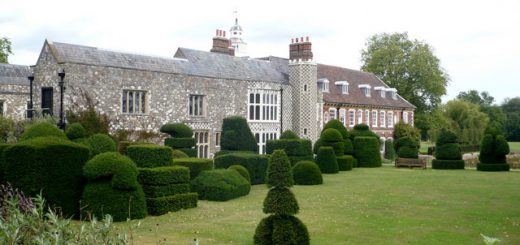Dylife Lead Mine
Dylife was a small lead mining community which was totally abandoned when the mine closed at the end of the 1800’s. The site has an interesting history, with evidence of lead mining taking place as early as the Roman period and in 1851 Dylife mine had the biggest waterwheel on the British mainland (63’ diameter), however, Dylife is probably most famous for a multiple murder than took place in the 18th century and has been embellished slightly in local folklore ever since.
 John Jones or Sion Jones was a blacksmith (Sion y Gof – Sion the Blacksmith) and he came to Dylife looking fo rwork in the 1700’s, leaving his wife and two children at home in Ystumtuen, Cardiganshire. Sion started having an affair with a maid servant in Dylife, so when his wife and children visited him it must have caused him a few problems, though their short stay seemed pleasant enough. When they were set to leave, Sion threw his wife, Catherine David and children Avania Lloyd and Thomas Lloyd down an open pit shaft and that is where they died. The dates vary very slightly depending upon the source, but in Welsh Folk Tales by Robin Gwyndaf, he suggests the date and time of the murder as 3.00pm on 23 October 1719. In the following January the bodies were discovered and Sion was arrested for their murder. In one version, examination of the bodies showed that one of the children had not died immediately and had eaten their mother’s breast. Sion is said to have blamed the cause of his actions on “some other woman and the devil”.
John Jones or Sion Jones was a blacksmith (Sion y Gof – Sion the Blacksmith) and he came to Dylife looking fo rwork in the 1700’s, leaving his wife and two children at home in Ystumtuen, Cardiganshire. Sion started having an affair with a maid servant in Dylife, so when his wife and children visited him it must have caused him a few problems, though their short stay seemed pleasant enough. When they were set to leave, Sion threw his wife, Catherine David and children Avania Lloyd and Thomas Lloyd down an open pit shaft and that is where they died. The dates vary very slightly depending upon the source, but in Welsh Folk Tales by Robin Gwyndaf, he suggests the date and time of the murder as 3.00pm on 23 October 1719. In the following January the bodies were discovered and Sion was arrested for their murder. In one version, examination of the bodies showed that one of the children had not died immediately and had eaten their mother’s breast. Sion is said to have blamed the cause of his actions on “some other woman and the devil”.
Sion was found guilty after his confession and hung on nearby Pen Y Grocbren (Gallows Hill). His body was then put in a gibbet as a warning to other wrong doers. It is said in one account of the story that as the blacksmith he had to make the frame from which he was himself hung. In 1938 a grim discovery was made. Sions skull and part of the metal frame he was gibbeted in was found and this is now on display in the National History Museum at St Fagans.
Strange Experiences
In their book The Encyclopedia of Ghost and Spirits, John and Anne Spencer refer to a report that appeared in the Cambrian News on 14 November 1986. The report concerns a man called Jeff who had entered the old mines at Dyliffe. Jeff had experience of being underground in mines and was used to them. Whilst walking down one of the passages he heard a noise like somebody humming from somewhere in front of him. Jeff called out, assuming that there was somebody else investigating the mine but got no response. When he reached a pool, he thought the humming was coming from the far side and shone his light (a head lamp I assume) in that direction, only to find a blank wall. He could still hear the humming voice from that direction though. He turned off his lamp realising that anybody down there must have a light source of their own and if he extinguished his, he had a better chance of seeing the other explorer’s light. Then he saw ‘a white or pale blue shape about the size of a small man. It gave off a sort of glow, but not like a torch’. Jeff left the mine quickly.
Apparently, now and again, lights have been seen leaving the mine and slowly flying away into the sky.
Note:
The huge wheel at Dylife was dismantled when the mine closed and shipped to Canada. It had supposedly worked not stop for fifty years.




Re: Dylife Lead Mine
Various pictures of the mine workings can be found here.